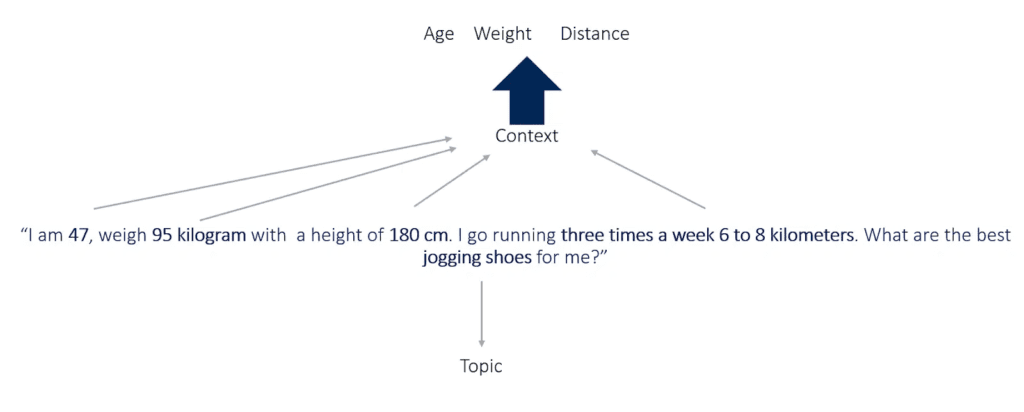
Exciting advancements in e-commerce SEO are on the horizon! As we move into an AI-driven world, it’s crucial to stay visible by optimizing for Google’s product entity database across multiple sources. Let’s delve into the future of e-commerce SEO with a focus on Shopping Graph Optimization.
Table of Contents
Why the Shopping Graph is Crucial in the Age of Generative AI
With applications based on generative AI transforming user search behavior, research is becoming more interactive, individualized, and faster. According to Microsoft, search will be 2.8 times faster in the future, reducing the need for multiple touchpoints to discover products.
In fact, an SE Ranking study found that an AI snippet box appeared in the Search Generative Experience (SGE) for almost 26% of e-commerce-related search queries. The Shopping Graph, Google’s semantic database, plays a significant role here.
Classic search results are often replaced by SGE below the fold, and a prominent component of product-related queries is displayed from the Google Shopping Graph. A ZipTie.dev study revealed that 80% of sources ranked for SGE were not in the top 10 search results for the respective query, emphasizing the need for a new SEO focus.


Ready to get started? Take your business to the next level with The Ocean Marketing.
Achieving online growth is easy with The Ocean Marketing. Take the first step today.
Understanding the Shopping Graph
The Shopping Graph, akin to Google’s Knowledge Graph, is a machine learning-powered database with billions of product listings. It helps users find specific products by scouring listings and relevant data across the web.

This real-time database provides various shopping functions like “Shop the Look” and “Buying Guide,” synthesizing information from numerous sources to offer detailed product insights.
Data Sources for the Shopping Graph
To optimize for the Shopping Graph, it’s crucial to understand its data sources:
- YouTube videos
- Manufacturer websites
- Online shops and product detail pages (PDPs)
- Google Merchant Center
- Google Manufacturer Center
- Product testing
- Product reviews
Structured information from these sources trains Google’s machine learning, enhancing its understanding of unstructured content through natural language processing.

Shopping Graph in RAG Systems
The Shopping Graph can be a valuable source for retrieval-augmented generation (RAG) systems, improving product research, personalized recommendations, interactive queries, and integrating ratings and reviews.

How Does Your Site Score?
Try our real-trial website auditor and see how well your site is performing. It will also provide you with a specific list of actionable improvements that will help your marketing!
Optimizing for the Future of E-commerce
Large language models (LLMs) learn from the frequency of co-occurrences in search queries. The attributes mentioned in data sources should reflect the contexts specified in prompts to ensure products are highlighted in AI-generated responses.
Here’s an example prompt for jogging shoes, translated into attributes by ChatGPT and Google’s Gemini:
- Durability
- Foot Type
- Gait
- Comfort

To optimize for the Shopping Graph, include these relevant attributes in manufacturer descriptions, YouTube videos, and other data sources.
Also Read: The Future of SEO in a World Dominated by ChatGPT
Key Takeaways on the Future of E-commerce SEO
- Focus on Shopping Graph Optimization: Prioritize optimization within the Google Shopping Graph as it integrates with AI Overviews.
- Adapt to Generative AI: Align SEO efforts with the changing search behaviors driven by generative AI.
- Consider New Search Behaviors: Prepare for fewer touchpoints to engage users as classic search results receive less attention.
- Optimize Based on Data Sources: Enhance the context and relevance of products in primary data sources for the Shopping Graph.
- Identify and Understand Relevant Attributes: Long-tail analysis of search queries and prompts is essential.
- Think Beyond Keywords: Shift focus to concepts, entities, attributes, and relationships as the keyword era wanes.
Resource:
https://searchengineland.com/shopping-graph-optimization-ecommerce-seo-440611
Marcus D began his digital marketing career in 2009, specializing in SEO and online visibility. He has helped over 3,000 websites boost traffic and rankings through SEO, web design, content, and PPC strategies. At The Ocean Marketing, he continues to use his expertise to drive measurable growth for businesses.

